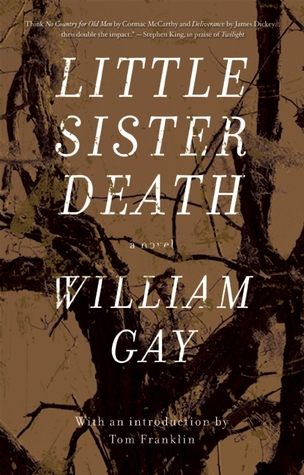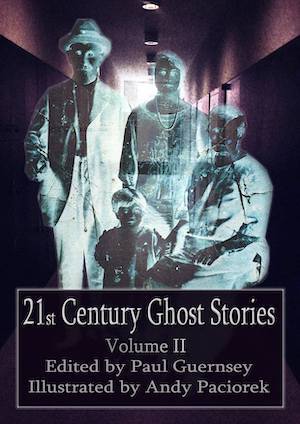William Gay’s Haunted Novel: A Ghost Story Review
William Gay’s posthumous novel, Little Sister Death (Dzanc Books; 202 pages), was published to modest fanfare on October 31. It is, in our opinion, the best kind of ghost story: one written by a novelist who views writing as an art rather than merely as a way of throwing a cheap scare into his reader.
Gay, if you’re unfamiliar with him, was a Tennesseean who achieved literary success relatively late in life when his first novel, The Long Home, won the 1999 James A. Michener Memorial Prize. He was far into his fifties and up to then had worked at construction, factory work, house painting, and a variety of other blue-collar jobs, and had published his first two short stories only a year before. His other books include the novels Provinces of Night and Twilight, along with the short-story collections I Hate To See That Evening Sun Go Down and Wittgenstein’s Lolita. He died in 2012.
Gay’s often-violent fiction is deeply rooted in the Southern Gothic tradition, and in his style one hears strong echoes of Cormac McCarthy, who was a personal friend and mentor. William Faulkner and Flannery O’Connor are other obvious influences.
Apparently, Gay also was a believer in ghosts.
In an unconventional afterword to Little Sister Death, Gay recounts the legend of the Bell Witch, the famous Tennessee ghost story on which he based his novel—and then goes on to reveal his own connection to this strange tale from the early 1800s. When he was a young man, he tells us, his favorite uncle took him on a road to trip to the site of the old Bell farm in Robertson County, where a great deal of poltergeist activity and other supernatural occurrences supposedly had taken place. Months later, the uncle began to complain that something from the farm had followed him home; he and his wife were hearing voices and other noises, and seeing weird lights in the backyard.
When Gay himself spent a night in his uncle’s house—he lay awake, with the lights on—he heard “a chuckle, a soft, malicious chuckle of just a few seconds duration. It seemed to come from no particular point in the room.
“I thought it was a joke. I jerked open the bedroom door. There was no one there. I went through the house. Everyone was asleep.
“It was a long time untill daylight.”
As for Little Sister Death itself . . . imagine Stephen King’s The Shining if it had been written by Cormac McCarthy and set in the rural South rather than the snowbound Colorado Rockies. Like King’s book, Gay’s novel has to do with a writer, David Binder, who for the sake of his work moves his wife and child to an isolated house that turns out to be haunted. When the ghosts begin to explore the cracks in Binder’s psyche, things get increasingly surreal and frightening.
At its outset, Little Sister Death shows huge promise. During the early chapters I found myself wondering if it might end up being the twenty-first century’s answer to Henry James’ The Turn of the Screw (1898), or Shirley Jackson’s brilliant work of psychological horror, The Haunting of Hill House (1959).
Alas, as the book progresses, it becomes all too clear that Gay was far from finished with this work at the time of his death. Toward the middle of the book there’s a change in the writing, and I don’t mean for the better. It’s hard to imagine that the author, who was a meticulous stylist, wouldn’t have done a lot more work here, including eliminating some significant repetitiousness, if he’d had the time. And the story’s ending is both abrupt and inconclusive. Without warning, the reader is dropped into the aforementioned afterword which, though interesting, does not constitute a satisfactory close to Gay’s fictional tale.
What a shame.


